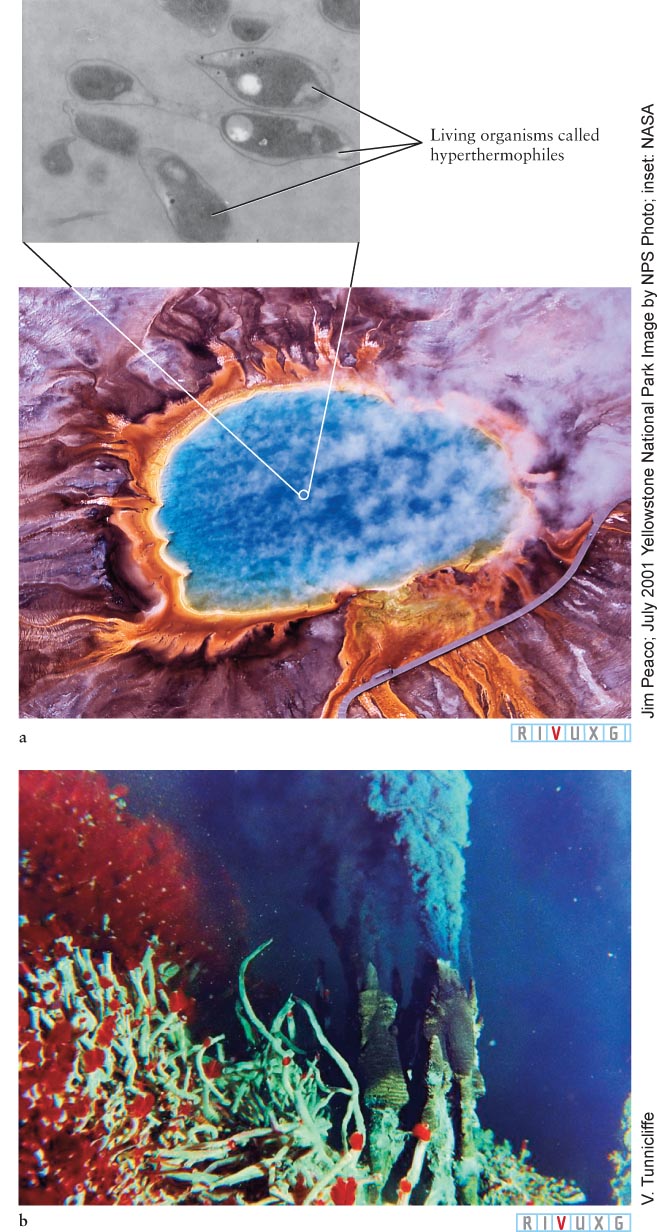15-3 Evidence is mounting that life might exist elsewhere in our solar system
Despite all of these potential limitations, scientists have strong evidence that everything does not have to be optimal for life to form. Geologists and biologists have discovered life on Earth in some incredibly challenging environments, such as on the ocean floor, in a lake far under the Antarctic ice pack, deep inside our planet’s crust, and even in hot geothermal vents (Figure 15-7). It therefore seems reasonable to believe that life could have originated off Earth under similarly challenging conditions. Scientists consider at least four places in our solar system as possible habitats for life past or present. They are Jupiter’s moons Europa, Ganymede, and Callisto, and the planet Mars.

Astronomers have discovered (see Chapter 6) that Mars once had surface liquid water and that it may still have underground bodies of liquid water. We saw in Sections 7-
Confirmation that life evolved on any of these worlds would demonstrate that the formation of complex molecules and structures is possible off Earth. However, given the limited chemical resources available on other worlds in our solar system, these locations are probably unsuitable for the evolution of complex life, like ourselves, that is self-
